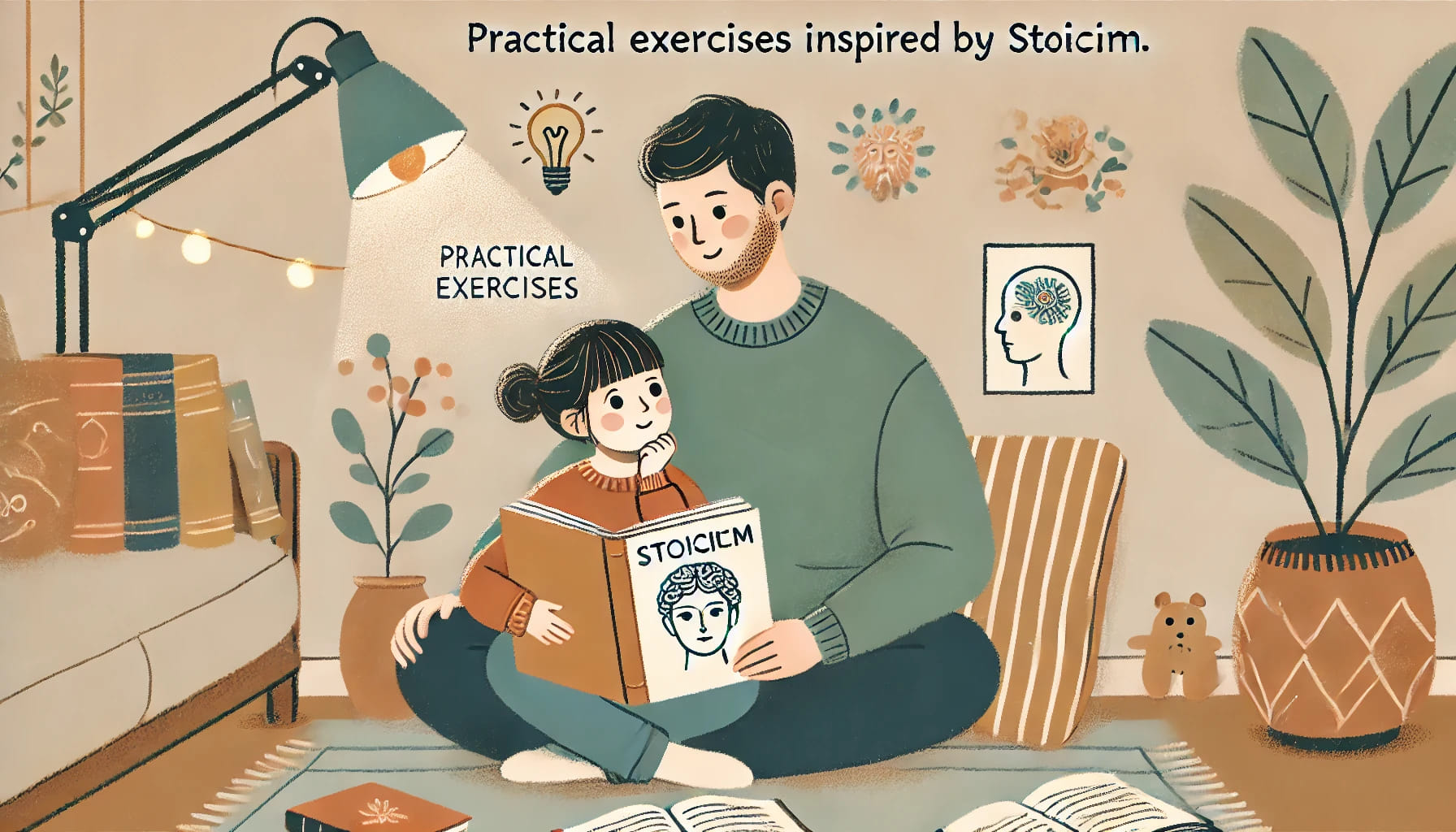In a fast-paced, complex world, children face challenges that require emotional resilience, moral strength, and the ability to navigate uncertainties. Stoicism, an ancient philosophy, provides practical tools to build these qualities early in life. By introducing Stoicism to Children, parents and educators can nurture virtues like self-control, gratitude, and kindness, laying the foundation for a strong and balanced character.
Why Teach Stoicism to Children?
Stoicism focuses on guiding individuals to live virtuously, embrace what they can control, and accept what lies beyond their power. Teaching these principles to children equips them with tools to manage frustration, cope with failure, and develop empathy. Unlike abstract philosophies, Stoicism offers relatable and actionable lessons that can resonate with young minds.
For example, the Stoic dichotomy of control teaches that while we cannot always dictate outcomes, we can control our reactions. This concept can be simplified for children as: “You can’t always choose what happens, but you can choose how you respond.”
Introducing Stoicism Through Stories
Children naturally engage with stories, making them an excellent medium to introduce Stoic ideas. Tales of ancient Stoics like Marcus Aurelius or Epictetus can be simplified into relatable anecdotes. For instance, you could share how Marcus Aurelius remained calm under pressure as an emperor and encourage children to reflect on how they can stay calm when things don’t go their way.
Additionally, modern children’s books that emphasize resilience, gratitude, or fairness can complement Stoic teachings. The key is to draw connections between the lessons in these stories and everyday experiences.
Practical Stoic Exercises for Kids
- Gratitude Journals
Encourage children to write or draw three things they are thankful for each day. This practice fosters a positive outlook and aligns with the Stoic principle of appreciating what you have. - The Pause Button
Teach children to “press pause” before reacting when they feel upset. Explain that taking a deep breath and counting to five helps them choose their response rather than acting impulsively. This mirrors the Stoic practice of managing emotional reactions. - Visualization Techniques
Stoics often used negative visualization—imagining challenges they might face—to prepare themselves emotionally. For children, this can be reframed as imagining how to handle a tough situation, like losing a game, in a calm and thoughtful way. - Empathy Building
Ask children to imagine how someone else might feel in a specific situation. This exercise builds compassion and aligns with the Stoic value of justice, which emphasizes treating others fairly.
Modeling Stoicism in Everyday Life
Children learn more from actions than words. By modeling Stoic behavior, parents and teachers can demonstrate the philosophy in action.
- Stay Calm Under Pressure: If you remain composed during stressful moments, children will see how self-control works in real life.
- Express Gratitude: Share what you’re thankful for openly, encouraging children to adopt a similar habit.
- Discuss Mistakes Positively: Show that failure is an opportunity to learn rather than a reason to despair.
When adults embody Stoicism, children absorb its values naturally, seeing them as part of everyday life rather than abstract rules.
Simplifying Stoic Language
Stoic terminology can seem daunting, but simplifying it makes it accessible to children. For instance:
- “Virtue” can become “being a good person.”
- “Dichotomy of control” can be framed as “what you can and can’t change.”
- “Tranquility” can be described as “feeling calm inside.”
By using language that resonates with young minds, Stoicism becomes an approachable and practical philosophy.
The Long-Term Impact of Stoicism for Children
Teaching Stoicism for Children goes beyond handling tantrums or managing disappointment. It shapes their worldview, helping them grow into empathetic, resilient, and thoughtful adults. A Stoic foundation nurtures confidence and inner peace, qualities that remain valuable throughout life’s challenges.
As Epictetus said, “Education is freedom.” By guiding children with Stoic principles, we give them the freedom to live thoughtfully and virtuously, regardless of the chaos around them.
Conclusion: Stoicism to Children
Introducing Stoicism to children is not about burdening them with philosophical doctrines but providing them with tools to thrive. Through stories, practical exercises, and modeled behavior, Stoicism becomes an enriching part of their development.
In teaching Stoicism for Children, we invest in their character, helping them navigate life with wisdom, courage, and compassion. By starting young, we give them a gift that will last a lifetime: the ability to stay grounded, no matter what comes their way.

